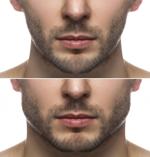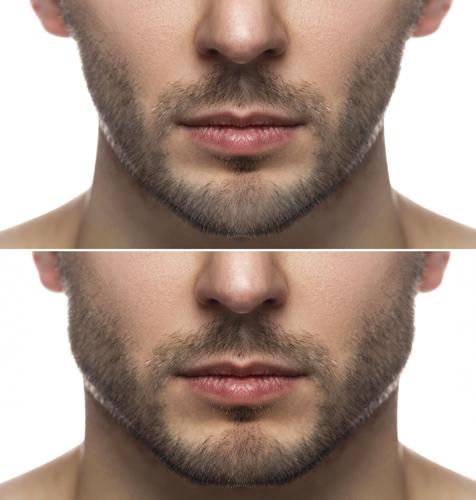Scroll on TikTok long enough and youŌĆÖll come across the same video: a person, often a young man, using their index finger to point out their jawline, their lips tightly pursed.
ItŌĆÖs called mewing ŌĆö a tongue exercise that is meant to help tone facial features and sharpen your jawline ŌĆö and itŌĆÖs part of a broader trend of ŌĆ£looksmaxxing,ŌĆØ which on the surface, promotes self-care and meant to help people improve their looks.
But, the ŌĆ£maxxingŌĆØ trend has a dark side, leaning into the extremes of steroid use, plastic surgery, extreme dieting through ŌĆ£stravemaxxing,ŌĆØ and even ŌĆ£bone smashing,ŌĆØ the trend of breaking face bones in the hopes that they heal to look more “masculine.”
Experts warn that the latest┬Āviral trend is yet another example of young people being┬Āpressured on their insecurities and forming unrealistic expectations for their self-image.
What is mewing?
Mewing involves keeping your tongue on the roof of your mouth, while keeping your teeth just behind your top teeth and lips pressed together.
Reply to @itsjeremiah.w 3 STEP MEWING TUTORIAL
It’s part of a broader trend of “looksmaxxing” that fixates on certain physical features, creating and adopting a broad array of terms.
“Mogging” is often used to describe when someone appears more attractive than someone else, leading to the namesake for “Mogwarts,” an influencer-run online school meant to help students with skin care, looksmaxxing, dental care and hair care.
Looksmaxxers also fixate on the canthal tilt, or the tilt of someone’s eyes. A downward tilt is considered negative, while a positive tilt is tagged as desirable.
How did mewing start?
Mewing was created by British orthodontist Dr. John Mew and his son, Dr. Michael Mew, as part of the elder MewŌĆÖs alternative to traditional orthodontic practice. The younger Mew, whose TikToks on mewing have racked up billions of views, has since faced for advising potentially harmful treatment.
Mewing and the broader “looksmaxxing” trend started out in incel communities, Kaitlynn Mendes, a sociology professor at Western University and the Canada research chair in inequality and gender, told the Star.
“It’s linked to the idea that you have more success, more sexual success or romantic success, if you follow certain steps,” Mendes explained. “This is how you can optimize your looks to increase or enhance your sexual success.”
It’s since leaked into the mainstream, through manosphere icons like Andrew Tate and Jordan Peterson, among other influencers that target boys and emphasize extreme stereotypes of masculinity. Manosphere sites and internet discussion groups are often focused on men’s interests and rights as opposed to women’s, and are often connected with opposition to feminism or dislike of women.┬Ā
Is mewing dangerous?
ŌĆ£ItŌĆÖs a very low risk activity,ŌĆØ Tim Caufield, a professor at the University of Alberta’s faculty of law and School of Public Health, said. ŌĆ£The dangers associated with it are more about, the marketing, the pressure that comes with influencers who are trying to suggest that you need to maximize your appearance.ŌĆØ
While mewing itself might be innocuous, it feeds into worsening self-esteem issues stemming from social media use among young people. By playing up those insecurities, trends like mewing can lead young people toward the more harmful parts of ŌĆ£looksmaxxing,ŌĆØ Caufield warned.
Younger teens are especially vulnerable to the negative effects of social media, Gary Goldfield, a senior scientist at the Children’s Hospital of Eastern Ontario Research Institute, said, and while thereŌĆÖs no scientific research done on mewing specifically, that same effect probably applies.

Mewing is a tongue exercise meant to help tone facial features and sharpen your jawline. But experts warn trends like mewing can lead to unrealistic expectations for self-image, especially in young people.
Blackay | Dreamstime.comIs looksmaxxing dangerous?
Aiming for unrealistic and unattainable esthetics can be an ŌĆ£entry point to extreme diets, to extreme exercise, maybe to the use of steroids, and other unhealthy activities, all for the purpose of esthetics,ŌĆØ Caufield added.
None of this is new, he said. ŌĆ£The wellness and beauty industry has used these strategies forever. Create insecurity, create a need and then provide a bogus solution to that need. And mewing, though it seems absurd and frivolous, is just part of that long destructive history.ŌĆØ
Research from Goldfield and others has found that people who already have lower self-esteem are much more susceptible to negative social comparisons and body dissatisfaction, which can lead to eating disorders.
Algorithms can also catch onto self-esteem issues, Goldfield said, with some scientific reports that have found people interested in losing weight being targeted with pro-eating disorder websites.
It’s also part of a broader cycle that has trapped young people, Mendes said.┬Ā
“People are increasingly making these videos because they’re looking for ways to bring attention to their platform and monetize themselves,” she explained. “So they’re incentivized to create this kind of content.”┬Ā
The trend catches on when more young people make mewing and looksmaxxing videos, which is then fed back to other young people, especially young boys.
Mendes’ research has uncovered an increasing pressure shaming young people, young boys particularly, to match the often unattainable ideals of celebrities and athletes online.
How to talk to kids about mewing and self-esteem
The cliche that “beauty is skin deep” still applies to today’s generation, Goldfield emphasized.┬Ā
Some parents might demand more education on self-image in schools, Goldfield said, but the message would echo similar campaigns that already exist.
Messaging from the 70s and 80s, warning against “unattainable sociocultural standards of attractiveness” remains an important and relevant reminder, he added, and aiming for those impossible standards sets young people up for dissatisfaction.
Enhancing appearances through lifestyle changes can be fine, Goldfield said, but ŌĆ£balance and moderation are the key” and promoting activities and hobbies can lessen the pressure to fit in through appearances.┬Ā
ŌĆ£Really one of the best ways to safeguard our children is to put them in activities, or have them develop some hobbies and interests, some skills that make them feel good about themselves, so they’re less reliant on social validation through appearance,ŌĆØ he advised.




























To join the conversation set a first and last name in your user profile.
Sign in or register for free to join the Conversation